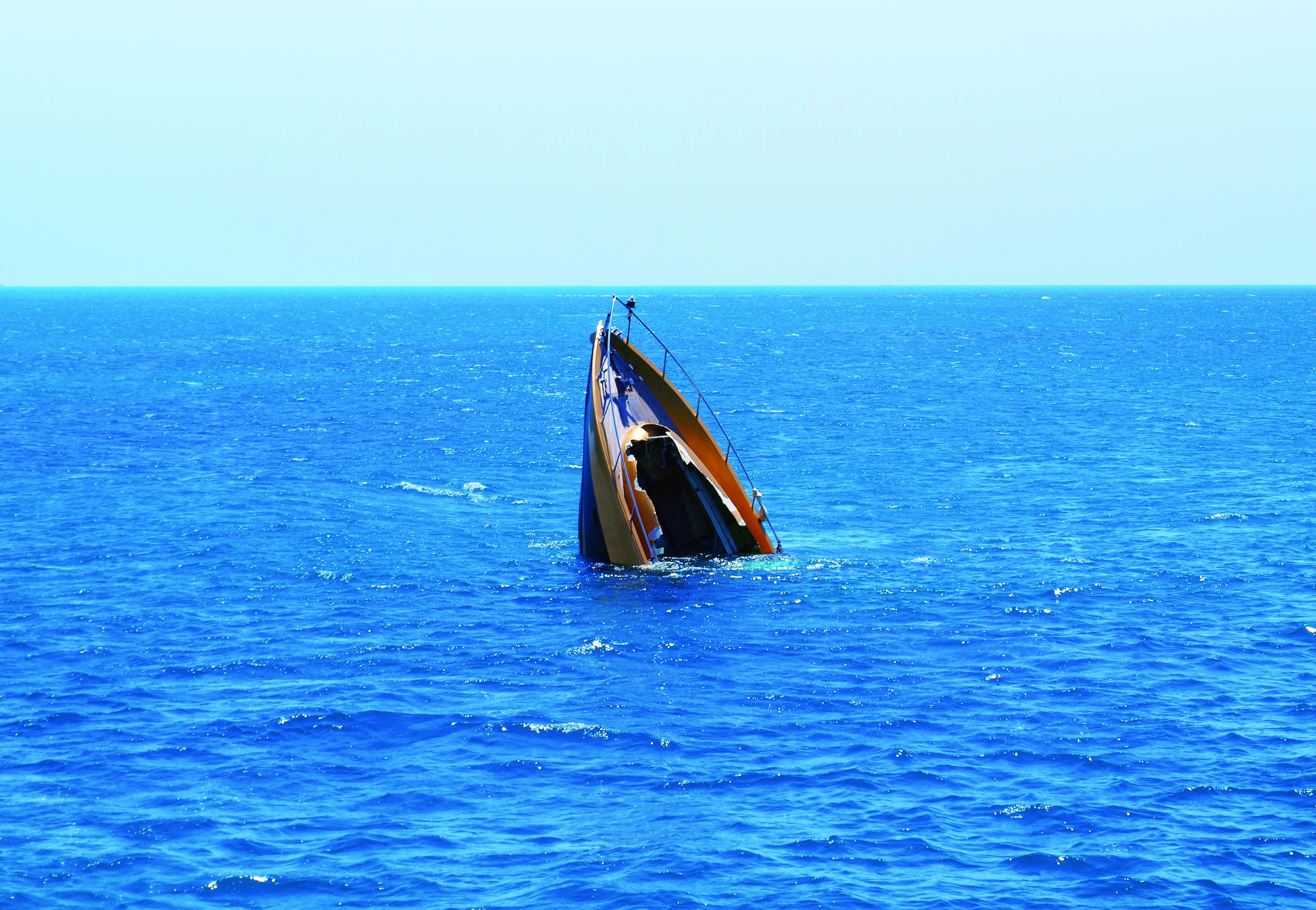Specialty Lines Markets
FOCUS ON BOATING: CALM BLUE OCEAN OR THE PERFECT STORM?
Despite expected growth, claims severity increases as boat technology advances
By Lori Widmer
Based on sales alone, you’d never know there was any pressure on the boating industry.
The 2018 tariffs on steel and aluminum caused plenty of manufacturers and insurers alike to hold their collective breath. Yet the tariffs have done little to impact sales, and in 2018 the industry saw the seventh consecutive year of growth in boat sales, according to the National Marine Manufacturers Association (NMMA).
That 4% increase marks the highest sales level since 2007, the NMMA says. And 2019 is expected to see continued growth. In fact, in 2018, Global Market Insights predicted that the recreational boating market could realize maximum revenue topping $125 billion by 2024.
Yet not everyone is excited. With increasing storm intensity and damages, there are now fewer players in the market. “The recreational marine market has contracted since the 2017 storm season with the withdrawal of several large domestic and Lloyd’s-backed programs,” says Richard Smith, vice president of Atlass Special Risks. “Rates have generally stabilized and there has been some premium hardening in the last 12 months.”
Depending on where that business is, of course. Smith says he’s seen large domestic insurers broadening their appetite, and several new markets have entered the space. But even within the domestic market, there are areas that are not easy. “Florida, the Gulf and the Caribbean continue to be the most difficult markets for insureds and insurers alike,” Smith says.
That could be why the market is starting to show signs of flattening. David Knapp, marine product manager for Farmers Insurance, sees the current rate of growth beginning to slow.
Knapp says some market segments are showing more growth than others—personal watercraft, tow/wake boats, for example. “However, we’re seeing the lines blurred a bit with more and more hybrid-style boats,” he adds. With added enhancements and technological advances, Knapp says a simple homeowners policy endorsement is no longer enough to cover boats.
“While independent agents should ensure their customers are properly insured when on the water, in transit to the water and while the boat is in storage, the most important conversation is around the inherent dangers of boating and the need for medical payments coverage, high limits of liability and an umbrella policy.”
—Brook McGuire
Strategy Lead, Specialty Products
Safeco Insurance
Luckily, Knapp says, carriers are responding well to the need, offering plenty of enhanced coverage options from packaged features to endorsements. What that’s done is fuel competition. “Competition for recreation-type insurance, with the focus on household retention, is as strong as ever with carriers promoting bundling and cross-sell,” Knapp says. “Pricing for boat insurance overall has been relatively stable, with pockets of targeted rate increases in catastrophe-prone areas and segments.”
Brook McGuire, strategy lead for Safeco Insurance’s Specialty Products line, agrees. “Broadly, coverage is evolving to meet the needs of consumers. We see competition as being stable, as is pricing.”
Claims and loss history
The claims picture may have something to do with the stable pricing picture. Knapp says the most common claims stem from perpetual issues—collisions and striking submerged objects. He says outboard engines are more prone to such claims, but that all boat and engine types are at risk.
Yet loss costs are increasing, says McGuire. That, she says, is due to the increased technology onboard, which means increased repair costs. But also, “There are also relatively few boat mechanics. They often have huge backlogs of work, and they can pick and choose the jobs they want to do, which also drives up repair costs.”
Still, these are risks that Knapp says are preventable. “Knowing the waters and the potential hazards within will go a long way in preventing an accident,” he says. “Using a depth finder and just slowing down and being aware can prevent a lot of claims.”
However, distracted boating is an emerging threat, and Knapp says everything from touch screens to smart phones is showing up as a cause of claims. “The best thing boaters can do to prevent potential claims is to be familiar with their boat and equipment, and to focus on their surroundings in the waters they’re navigating.”
“There have never been more coverage options and policy features available, and carriers have packages designed for specific boat types, so we’ve come a long way from the one-size-fits-all policy.”
—David Knapp
Marine Product Manager
Farmers Insurance
Combine that distraction with another trend that McGuire sees, and the industry could be looking at a spike in claims: renting one’s boat. McGuire says the sharing economy could cause a serious coverage shortage if boat owners and their insurers aren’t prepared. “If you rent your boat through Boatsetter, they provide $300,000 of liability coverage for the time the boat has been chartered. But what happens if a claim exceeds $300,000? Personal watercraft policies exclude commercial use, which would create a coverage shortage for the customer. This is something personal lines carriers are starting to contemplate, but I’m not sure that any carrier has fully responded to this need.”
While these claims exposures can be prevented or reduced for the most part, less preventable are the CAT losses that Smith says have characterized recreational marine claims over the last two years. “The value of the average claim has also increased with the advancement of technology,” Smith says. “Lightning strikes continue to be one of the more costly claims we see, as they impact high-end electronics and engines.”
More troubling, however, are extraordinary settlements that could take root within the claims arena. Smith has seen issues involving employment of crews as a growing concern for insurers. Brokers and agents, he says, can advise their policyholders to adopt a strong vetting system. “Properly vetting and onboarding new crew is something owners and their representatives need to examine, as a more corporate approach to staffing large yachts is necessary.”
Smith suggests background checks, work history, and references as a good starting point. “In addition, properly training and reviewing workplace safety will be important measures to guard against avoidable injuries or other issues stemming from their employment,” he adds.
“Florida, the Gulf and the Caribbean continue to be the most difficult markets for insureds and insurers alike.”
—Richard Smith
Vice President
Atlass Special Risks
Knapp says what’s most worrying to him is the increase in the severity of liability claims, which he says can be blamed on at least two factors. “First, many of the newer boats have greater speed capabilities than ever before. Second, boaters have more distractions with smart phones, touch screen gauges, audio, and other technology on board.”
Add to that the increase in pressure from the plaintiff’s bar regarding bodily injury claims, Knapp says. “This has led to higher claim settlements overall. Agents, brokers, and their customers should be aware of these trends and not only make sure the appropriate coverages are selected, but also use caution when boating to help prevent a severe accident.”
McGuire says that negligence is at the root of many of the fatalities and traumatic injury claims. She says DUI and operator inexperience increase exposures significantly. “Frankly, there isn’t a way to avoid accidents, but this is where the value of the independent agent comes in. Our research shows that boat customers value coverage over just having the lowest price. While independent agents should ensure their customers are properly insured when on the water, in transit to the water and while the boat is in storage, the most important conversation is around the inherent dangers of boating and the need for medical payments coverage, high limits of liability and an umbrella policy.”
 Agent and broker advice
Agent and broker advice
Because of increased risks and claim costs, Smith says, it’s imperative that brokers understand these new and emerging risks and how they impact underwriting. He suggests working with underwriters to provide detailed information on each account. “Poor underwriting results are no longer being tolerated by the market. Marine insurance specialists will continue to serve insureds’ needs, as they understand the shifting dynamics of the market and have the access needed for more complex situations.”
Luckily, that’s already happening. Knapp has seen faster, more efficient quoting, and an improved understanding on the part of agencies and brokerages of what information needs to be part of the quote. Carriers too, he says, have technology that pre-fills boat data based on make and model information. “Marine specialty agents also do a very good job of up-front underwriting and knowing which carriers offer the best products for their unique risks. Many boats need additional coverages based on the mooring location, or size of the boat, and we’ve found that specialty agents are serving their customers well by selecting the most appropriate policy packages and endorsements.”
McGuire says agents and brokers can address claims issues up front. “Agents should do a thorough up-front underwriting conversation to understand all of the exposures presented. Multiple owners/operators, potential business use, water skiing, etc., all present unique exposures that need to be addressed.”
Plus, she recommends agreed value coverage versus ACV coverage. “Like cars, boats initially depreciate very quickly. Long term, the value is in the boat motor, not the hull. In 20 years, the blue-book value is very low. Insuring at agreed value means a boat purchased today for $25,000 is still covered at $25,000 versus a future blue-book value of $1,500.”
Those nuances are something Knapp says agents and brokers should understand. He recommends agents and brokers “stay up to date and get reacquainted, if needed, with the types of boat insurance offerings in the market. There have never been more coverage options and policy features available, and carriers have packages designed for specific boat types, so we’ve come a long way from the one-size-fits-all policy. In addition, pricing has become highly segmented and there are more discount opportunities, so good risks can find excellent coverage at a great price.”
For more information:
Atlass Special Risks
www.atlassspecialrisks.com
Farmers Insurance
www.farmers.com
Safeco Insurance
www.safeco.com
The author
Lori Widmer is a Philadelphia-based writer and editor who specializes in insurance and risk management.





